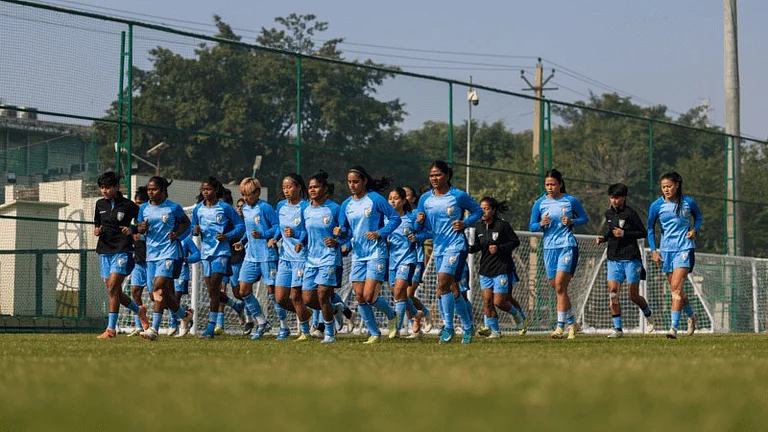For any country to achieve its full potential it has to make substantial investments in the health of its population. This is true for India too. For India to thrive economically, we need to be a healthier country. Over the years, India has made substantial investments to drive better health outcomes in adult, maternal, child and neonatal cohorts. While there has been significant progress, there are still state-wise and district wise gaps and disparities in health outcomes. These need to be addressed so that these investments can yield their intended results, and health interventions can reach, and benefit, the most vulnerable populations.
One of the biggest tools that policy makers have in their toolkit is data, which provides evidence of interventions and resulting outcomes. Data tells us if progress is being made, and what, if anything, can be revised to drive better results. Data has the power to inform both design of a program intervention and geographical gaps or missed populations. Once robust data is available, evidence-based decisions on specific interventions can be made and actioned.
India has been tracking national health progress, every five years. The National Family Health Survey (NFHS) which is overseen by the Ministry of Health, and is coordinated by the International Institute for Population Sciences (IIPS) in Mumbai, documents this progress. Today, for example, most recent findings emerging from NFHS - 5 Phase 1 Survey which show that investments in Reproductive Maternal Health Child and Adolescents have begun to show positive results. First, there have been substantial improvements in fertility indicators, contraceptive use, and health workers' reach for providing family planning services. Sex Ratio has improved in 14 out of 22 states. Second, immunization outcomes have improved. Vaccine coverage among children between ages 12 – 23 months is up, and in almost three-fourths of the districts, 70% or more children aged 12-23 are fully vaccinated against childhood diseases. Third, data has shown that both the number of birth registrations and institutional births have significantly increased. In 14 States/UTs, more than 90 percent of births were delivered in health facilities. This means many more women now have access to skilled care during pregnancy and childbirth, which would further imply better prevention, detection, and management of pregnancy related complications. However, there is still much more that needs to be done. For example, data tell us that malnutrition estimates have shown some mixed results and progress isn’t quite as expected. Efforts have to be doubled down to meet district, state, and national level targets.
But the good news is that today we have more data-based insights than ever before. Take the fact that while in the first three NFHS rounds - conducted in 1992–1993, 1998–1999 and 2005–2006 – policy makers only had access to state level data. But the fourth round, with a much larger sample size, was set up to generate estimates of most indicators for all 640 districts in the country. In fact, the District Level Household Survey (DLHS) was launched in response to the need for district-level data on the Reproductive and Child Health Programme. Earlier the Health Ministry itself used to conduct District Level Health Survey (DLHS) and Annual Health Survey (AHS). The Ministry of Health and Family Welfare (MoHFW) has now decided to conduct integrated NFHS with a periodicity of three years in lieu of different surveys from 2015-16 onwards, to meet the evolving requirements for frequent, timely and appropriate data at the National, State and District levels.
During this pandemic we have seen how it became imperative to track COVID cases on a daily basis. Public and private hospitals were tracking daily cases and country wide estimates on new and cured cases were available. MoHFW continued to track active, discharged and death cases. Similarly, now we can see real-time information on the number of people who have received the COVID-19 vaccine. This model of intensive monitoring and data management can be leveraged to track health challenges and health indicators more closely. In fact, lessons learnt from this active data management on COVID-19 should be leveraged to extend monitoring and tracking across other critical health outcomes and in a more methodical and coordinated manner. Indeed, a pan-India effort to track health indicators at the local level and more frequently, and also in real time, will be very powerful as a tool for policy makers.
Data collection is an arduous and expensive exercise, but with new technologies also means it can be gathered faster, cheaper, in a more granular fashion and at scale. Real-time information can give continuous guidance to policymakers and health workers. It can answer their questions: What has been the efficacy of a program? Did we see improvement? Why did the same intervention not succeed in a different geography? Which populations got missed? And most importantly what can be done to overcome local barriers and pave the way for better outcomes. As we write, NFHS-5 is still being conducted in around 6.1 lakh sample households to provide disaggregated data up to district levels. Insights from this data should inform the next phase of policy interventions.
(The author is a consultant of Digital Health Programs, Maulana Abul Kalam Azad University of Technology (formerly WBUT), West Bengal, India and was formerly attached to Stanford University School of Medicine, USA- https://isqua.org/scholarship/lucian-leape-patient-safety-fellowship.html)





















